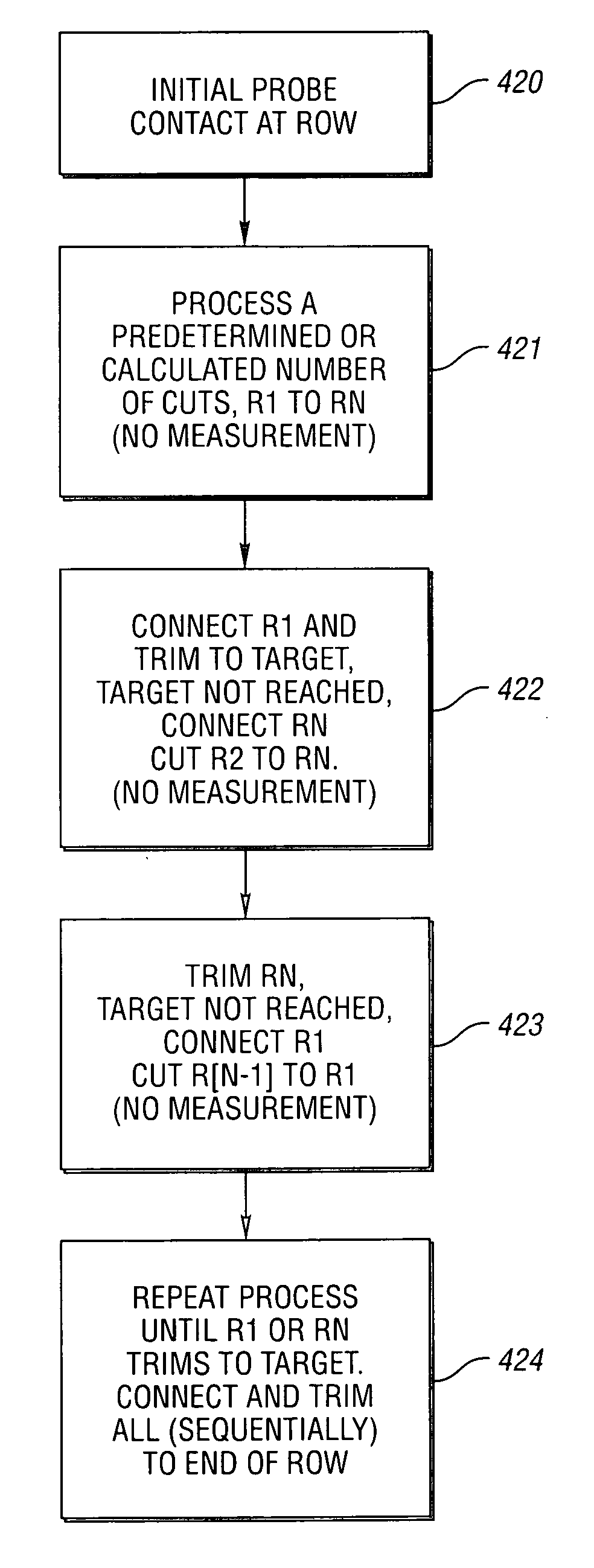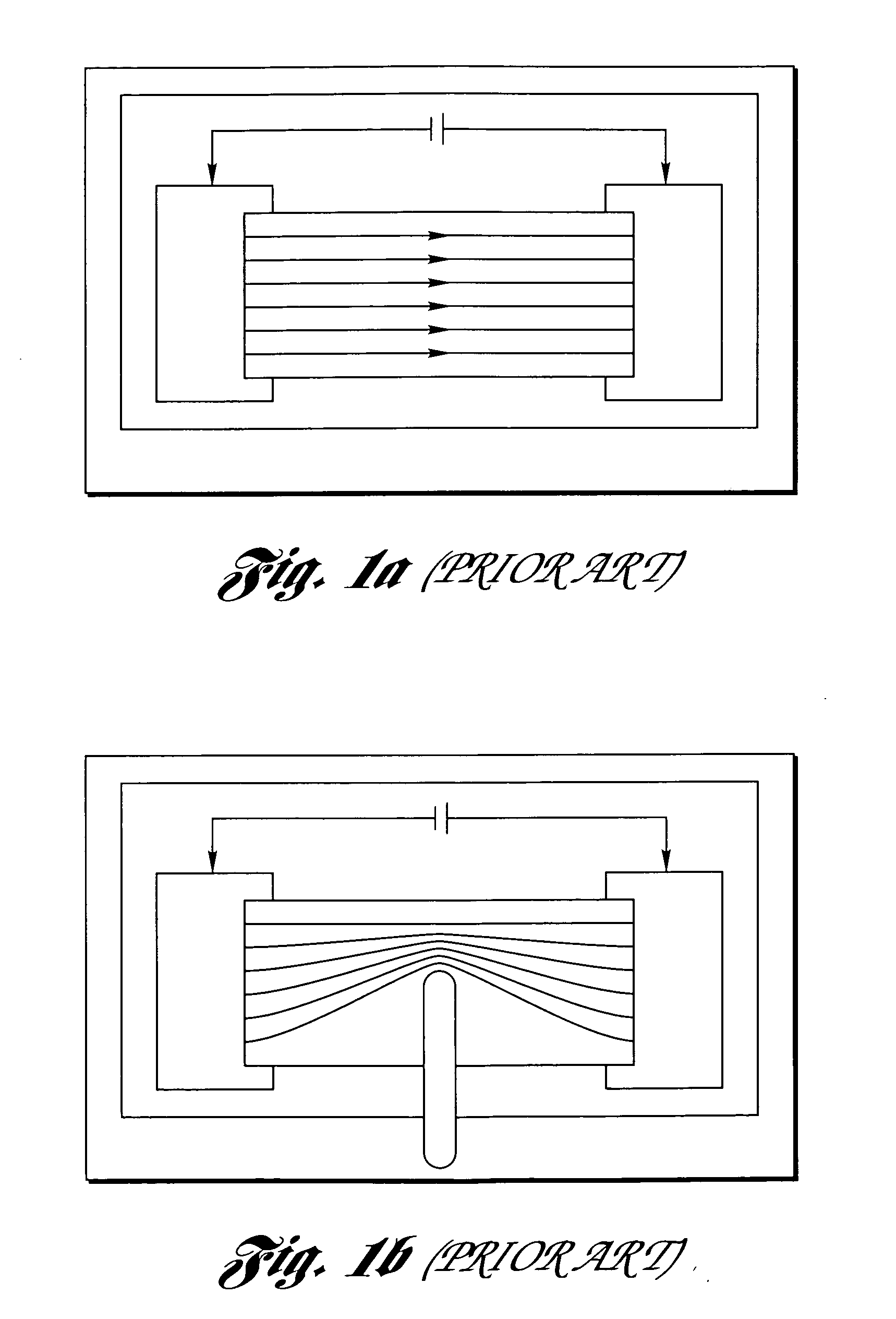Method and system for high-speed precise laser trimming and electrical device produced thereby
a laser and laser cutting technology, applied in the field of laser material processing, can solve the problems of reducing resistance drift, out of specifications, nothing gained, etc., and achieve the effect of improving post-cut stability and precise trimming
- Summary
- Abstract
- Description
- Claims
- Application Information
AI Technical Summary
Benefits of technology
Problems solved by technology
Method used
Image
Examples
Embodiment Construction
)
High-Speed Serpentine Trimming Process
[0094] In resistor trimming, the cuts direct the current flowing through the resistive material along a resistance path. Fine control and adjustment of the cut size and shape change the resistance to a desired value, as illustrated in FIGS. 1a-1c. Typically, chip resistors are arranged in rows and columns on a substrate. FIG. 2a shows an arrangement wherein a row of resistors R1, R2, . . . RN is to be processed. A probe array, having a probe 200 and depicted by arrows in FIG. 2a, is brought into contact 202 with the conductors of a row of resistors. A matrix switch addresses the contacts for a first pair of conductors (e.g.: contacts across R1) and a series of cuts and measurements is performed to change the resistance between the conductor pair to a desired value. When the trimming of a resistor is complete, the matrix switches to a second set of contacts at the next row element (e.g.: R2) and the trimming process is repeated. When a complet...
PUM
| Property | Measurement | Unit |
|---|---|---|
| Length | aaaaa | aaaaa |
| Time | aaaaa | aaaaa |
| Time | aaaaa | aaaaa |
Abstract
Description
Claims
Application Information
 Login to View More
Login to View More - R&D
- Intellectual Property
- Life Sciences
- Materials
- Tech Scout
- Unparalleled Data Quality
- Higher Quality Content
- 60% Fewer Hallucinations
Browse by: Latest US Patents, China's latest patents, Technical Efficacy Thesaurus, Application Domain, Technology Topic, Popular Technical Reports.
© 2025 PatSnap. All rights reserved.Legal|Privacy policy|Modern Slavery Act Transparency Statement|Sitemap|About US| Contact US: help@patsnap.com



